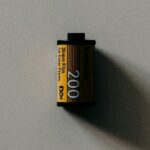Why Battery Capacity Claims Often Mislead Buyers
In the rapidly advancing world of technology, consumers are continuously confronted with an array of products boasting impressive battery capacities. However, the actual performance of these batteries often falls short of their claims. As smartphones, laptops, and other portable devices integrate higher capacity batteries, understanding the nuances behind battery specifications has never been more critical. This article explores the implications of battery capacity claims, providing in-depth insights into product specifications, user experience, and the reality behind these enticing figures.
Product Introduction and Specifications
When examining battery capacity, manufacturers generally emphasize milliampere-hours (mAh) or watt-hours (Wh) as key indicators of a battery’s potential longevity. However, prospective buyers should be wary. Just because a device advertises a high mAh rating does not guarantee extended usage time. Factors such as power consumption, device efficiency, and the software being utilized play substantial roles in actual battery life.
For example, a smartphone advertised with a 5000 mAh battery may not last longer than a device with a 4000 mAh battery if the former has a higher resolution display or runs power-hungry applications. Thus, it’s crucial to assess other specifications alongside the battery’s capacity, including screen size, processor efficiency, and even usage patterns.
Aesthetics and Feel
While capacity claims tend to dominate the conversation, the design and ergonomics of devices also significantly affect user experience. For instance, a phone with a higher battery capacity may need a bulkier chassis or heavier casing, impacting its overall aesthetics and comfort. Manufacturers often face the dilemma of balancing battery size with device portability.
Many users gravitate toward sleek designs, while others prioritize longevity. It’s essential for potential buyers to consider their proclivities—do they prefer a lightweight device that might require frequent charging, or a more robust model that can endure longer on a single charge?
Optimal Usage Patterns
Understanding how to maximize battery life is pivotal for ensuring user satisfaction. Regular practices include adjusting display brightness, disabling unused apps and features, and employing energy-saving modes. Besides, taking care of the battery’s health—keeping it charged between 20% and 80%, avoiding extreme temperatures, and not leaving it plugged in indefinitely—also enhances longevity.
Ultimately, the effectiveness of these strategies can vary based on individual usage patterns. Users who engage in resource-intensive tasks, such as gaming or streaming high-definition videos, will naturally deplete their batteries quicker. Therefore, a deeper understanding of one’s usage habits is critical to acknowledging the potential of the advertised battery capacity.
Pros and Cons
The alluring promises of superior battery capacity often mask certain drawbacks, leading to buyer disillusionment.
Pros:
– Convenience: Higher capacity batteries can support longer usage between charges, reducing the frequency of charging sessions.
– Productivity: Devices that maintain power longer may enable users to work or enjoy entertainment without interruption.
Cons:
– Misleading Claims: Marketing often exaggerates battery performance, leading to discontent when actual performance does not meet expectations.
– Physical Design Trade-offs: Higher battery capacity frequently results in heavier, bulkier devices—this could deter users who favor mobile convenience.
Ranking and Recommendations
When it comes to ranking devices based on battery capacity claims, it’s essential to look beyond mere numbers. A holistic evaluation should factor in real-life performance metrics, user feedback, and overall satisfactions, such as customer reviews and expert opinions.
Devices with transparent performance metrics and reliable user testimonials typically surface as more reliable options despite potentially lower capacity numbers. Thus, consumers are advised to consider brands that prioritize authentic communication over exaggerated marketing.
Target User Demographics
The audience for high-capacity battery devices is varied but predominantly includes:

– Busy Professionals: Users requiring prolonged device availability for work-related tasks.
– Frequent Travelers: Individuals on the go who need reliable long-lasting devices while away from charge sources.
– Tech Enthusiasts: Gadget lovers keen on exploring cutting-edge features, including extended battery life.
In conclusion, while battery capacity claims are significant and valuable for guiding purchase decisions, they should not be the sole determinant. Awareness of the factors influencing battery life and performance, along with diligent consideration of user needs and device specifications, creates a more informed buying experience. For prospective buyers, critical thinking and thorough research will pave the way for more satisfying technology investments.





